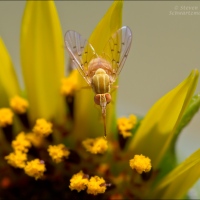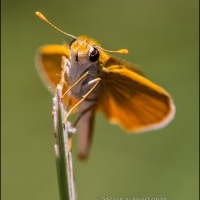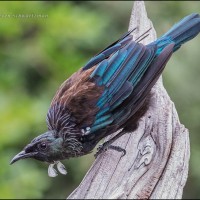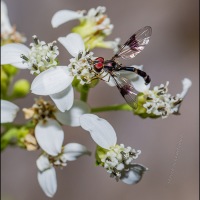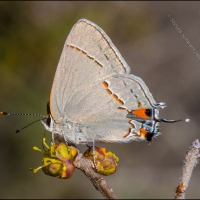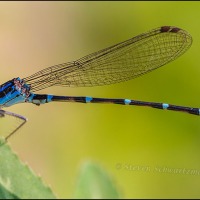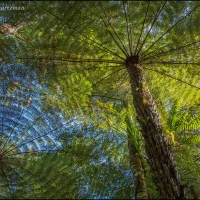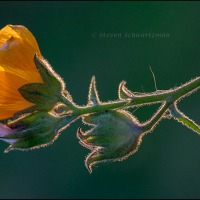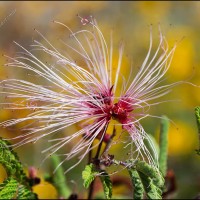Posts Tagged ‘Arizona’
More cacti near Tucson
On our way out of Tucson four years ago today we stopped for a guided desert walk in the eastern section of Saguaro National Park. That’s where we first heard about the staghorn cholla cactus, Cylindropuntia versicolor. The second picture offers a closer look at the fruit of this species.
We also saw two other cacti, a fishhook barrel (Ferocactus wislizenii) and a saguaro (Carnegiea gigantea):
And here’s a relevant quotation for today: “Few countries in the world present so marvellous a variety of scenic features as does Arizona, the Wonderland…. Drop upon it where you will, it is wondrous, marvellous, astounding, even thrilling.” — George Wharton James in Arizona, the Wonderland, 1917.
© 2020 Steven Schwartzman
Cacti at the Arizona-Sonora Desert Museum
Four years ago today we spent time at the Arizona-Sonora Desert Museum in Tucson. Above is a mature teddy bear cholla cactus, Cylindropuntia bigelovii; the second picture gives you a closer look at a younger one.
To top things off, below is a fasciated saguaro, Carnegiea gigantea.
You might say those cacti do everything in a big way.
And here’s a relevant quotation for today: “Take the rose—most people think it very beautiful: I don’t care for it at all. I prefer the cactus, for the simple reason that it has a more interesting personality. It has wonderfully adapted itself to its surroundings! It is the best illustration of the theory of evolution in plant life.” — Charles Proteus Steinmetz.
© 2020 Steven Schwartzman
Slide Rock State Park
On this date in 2016 we spent a few hours in Slide Rock State Park near Sedona, Arizona.

A strangely deformed alligator juniper (Juniperus deppeana)
Overwhelmed by so many other scenic places on that trip, I never showed any of the Slide Rock pictures.
After four years, finally you get to see a few of those views.
Oak Creek’s rocks and water came in for a lot of attention.
And here’s a question rather than a quotation: how often do you renew your poetic license?
© 2020 Steven Schwartzman
Apache plume in northern Arizona
The flowers of Apache plume (Fallugia paradoxa) reveal the plant’s membership in the rose family.
In its late stage, Apache plume is quite similar to the prairie smoke (Geum triflorum, likewise in the rose family) that I observed in Illinois four years ago, and also to the old man’s beard (Clematis drummondii, in a different botanical family) that you’ve so often seen from central Texas.
Because the closest to Austin that Apache plume grows is far west Texas, I don’t often get the chance to photograph this species, so when I came across a few of these plants in northern Arizona four years ago today, I wasn’t about to pass up my chance to portray them.
Oh yeah, at the same site there was also a minor attraction that I took a few pictures of.
© 2020 Steven Schwartzman
Paloverde by dusk and day
Four years ago this evening, dusk was approaching by the time we arrived in Phoenix’s South Mountain Park, which is the largest municipal park in the United States. As sunlight faded, I used flash to photograph a paloverde tree (Parkinsonia microphylla or florida; there are two local species, and I don’t know which this was). The flash brought out the greenness of the tree’s branches—in fact palo verde means ‘green branch’ in Spanish. The next morning, on our way out of Phoenix, we stopped at South Mountain Park again. It seems that when paloverde branches die, they tend to turn orange.
We learned that paloverdes sometimes act as “incubators” for saguaros (Carnegiea gigantea), giving some degree of protection to the young ones until they get established.
Likewise for barrel cacti.
Did you know that our use of cactus to designate plants like these last two resulted from a mistake? It did. The Latin word cactus, from Greek kaktos, referred to a type of artichoke. Linnaeus, the great 18th-century scientific namer of species, understandably yet mistakenly thought that the spiny plants we now call cacti were akin to the prickly artichoke.
© 2020 Steven Schwartzman
Life and death in Saguaro National Park
Behold a fishhook barrel cactus (Ferocactus wislizenii) in the eastern sector of Tucson’s Saguaro National Park as we saw it two years ago today:
Hardy as desert plants are, they all eventually meet their demise. Here’s what a barrel cactus look like then:
Oh, all right, it was Saguaro National Park, so I guess I’ll have to show you a saguaro cactus (Carnegiea gigantea). This one had two particularly enfolding “arms”:
And here are the stately remains of a saguaro with upraised “arms”:
© 2018 Steven Schwartzman
Cholla cactus near sundown
How about this backlit cholla cactus in Tucson Mountain Park near sundown two years ago today?
© 2018 Steven Schwartzman



























